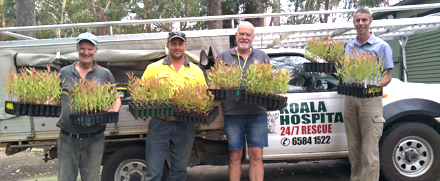Forestry Corporation of NSW is halfway through the delivery of 25,000 koala food tree seedlings to Port Macquarie Koala Hospital for their annual koala food tree giveaway program. Source: Timberbiz
The program will see koala food tree seedlings given to local and community groups wanting to build koala habitat on their land. All up, 25,000 seedlings will be donated to local planting projects to support koala populations, improve connectivity between areas, provide future food and habitat, and improve habitat value.
The seedlings were grown at Forestry Corporation’s Grafton nursery and have had an exceptional start with the perfect growing conditions and look extremely healthy and luscious, said Forestry Corporation’s Partnerships Leader, Sandra Madeley.
“These seedlings are grown in Forestry Corporation’s Grafton Nursery, a state of the art nursery growing high quality seedlings which will thrive when planted in areas they naturally grow,” Ms Madeley said.
“The selection of seedlings in the giveaway are not only grow naturally in the Port Macquarie Hastings area, they are the favourite food of the koala, including Forest Red Gum, Tallowwood, Swamp Mahogany and Grey Gum.”
This is the fourth year that the koala hospital has run the seedling giveaway in partnership with Forestry Corporation, said Koala Hospital Conservation Manager, Scott Castle.
“That’s 85,000 trees in the ground in areas where there was little or no habitat, and that is a massive positive in my opinion.”
While the program has been running since 1 April, the impacts of severe weather and flooding have hampered landholders’ initial efforts to plant seedlings this year.
“However, now that the sun has come out, so have the many passionate locals and groups wanting to plant seedlings to support koala populations,” Mr Castle said.
Forestry Corporation also provided information and resources to support the planting operations.
“Our specialist staff have developed a series of guides to support the crucial steps before and after trees are planted,” Ms Madeley said. “They cover how to select the right species for the right location, when and how to plant, ongoing risks and maintenance — these will help set these young seedlings up with every chance of success.”






